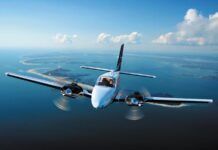As the number of Light Sport airplanes increases and more pilots are opting to forego the third class medical and simply fly Light Sport, we were curious to see how the insurance market is for liability coverage for those airplanes.
We asked Aviation Consumer contributing editor and owner of the Sutton James aviation insurance brokerage, Jon Doolittle, to go into the insurance market and get quotes for various Light Sport airplanes, new and legacy. For the quotes, the owner was to be a 40-year-old male, private pilot with 500 hours total time, 20 hours of tailwheel time and who flies 100 hours a year. The result is shown in the chart below. The dollar figure on the left side of the “/” is the annual premium for a $1 million liability policy with a $100,000 per person sublimit. The number to the right is the price for $1 million smooth coverage—if there is no dollar figure and the word PASS is shown, that means the company would not quote smooth coverage for that pilot in that airplane.
Doolittle told us that two of the companies don’t distinguish between light sport and private pilots, while others had requirements for an annual medical (they would accept a non-aviation medical) and an EKG. Others will write LSA airplanes, but require a third class medical for the owner/pilot. That got our attention—in what is arguably the softest insurance market in history, some insurers are requiring that light sport pilots have an FAA medical. We don’t know if that’s because insurers do not yet have much loss experience with LSAs and will become more liberal as they do so, or if they know something about medicals and their relation to the risk of pilot incapacitation that the rest of the industry doesn’t. Should the market harden before insurers obtain more loss data, we’re concerned that more may incorporate a third class medical condition on coverage. It certainly bears watching.
Two companies would not quote the Skycatcher and some others were “lukewarm” on it due to lack of factory support. The Ercoupe seemed to have fewer companies interested in it than other LSAs. Doolittle said that nobody seemed to know why. The companies that didn’t write them didn’t know much about them and the companies that did write them had nothing bad to say about them.
We found it interesting that the price differential for liability coverage between the most expensive and least expensive airplanes within a given insurer was small, however, the differential between insurers could be huge—with the most expensive nearly twice as pricey as the least expensive. The main reason for this is that premiums reflect each company’s loss experience and, inexplicably, the insurance companies do not share loss information.
We think that is wrong, especially in an industry as small as aviation insurance, overall, and the fraction of it that is LSA.




